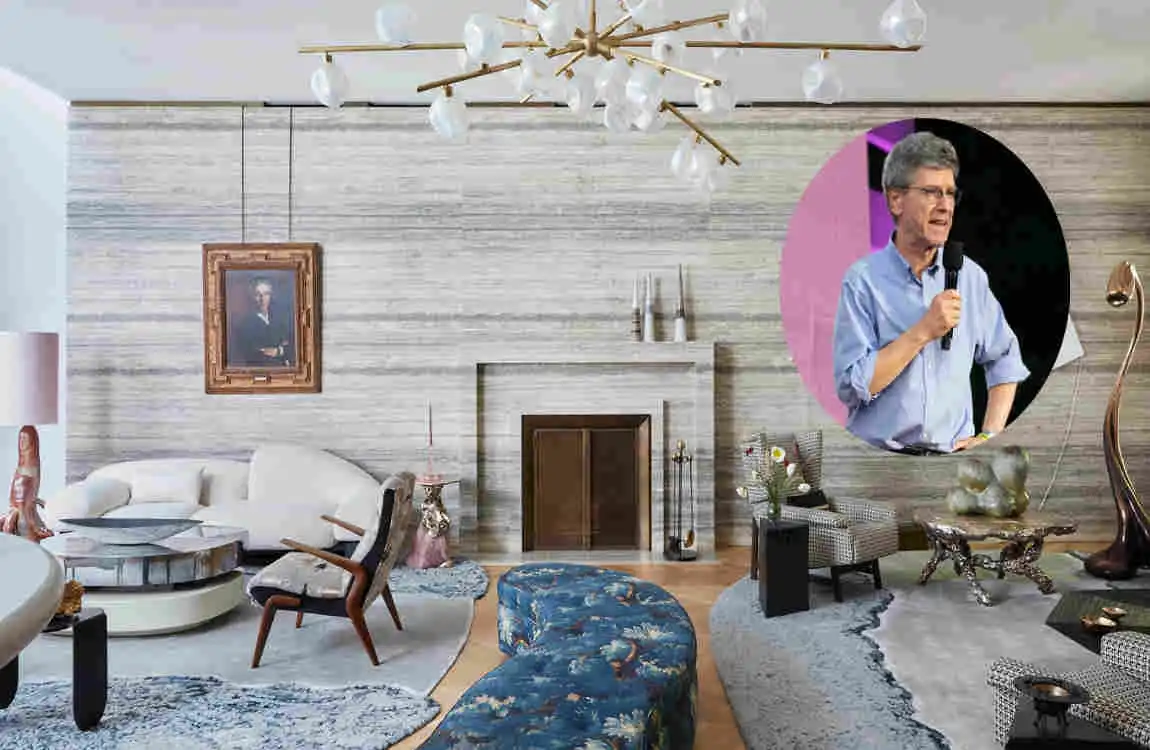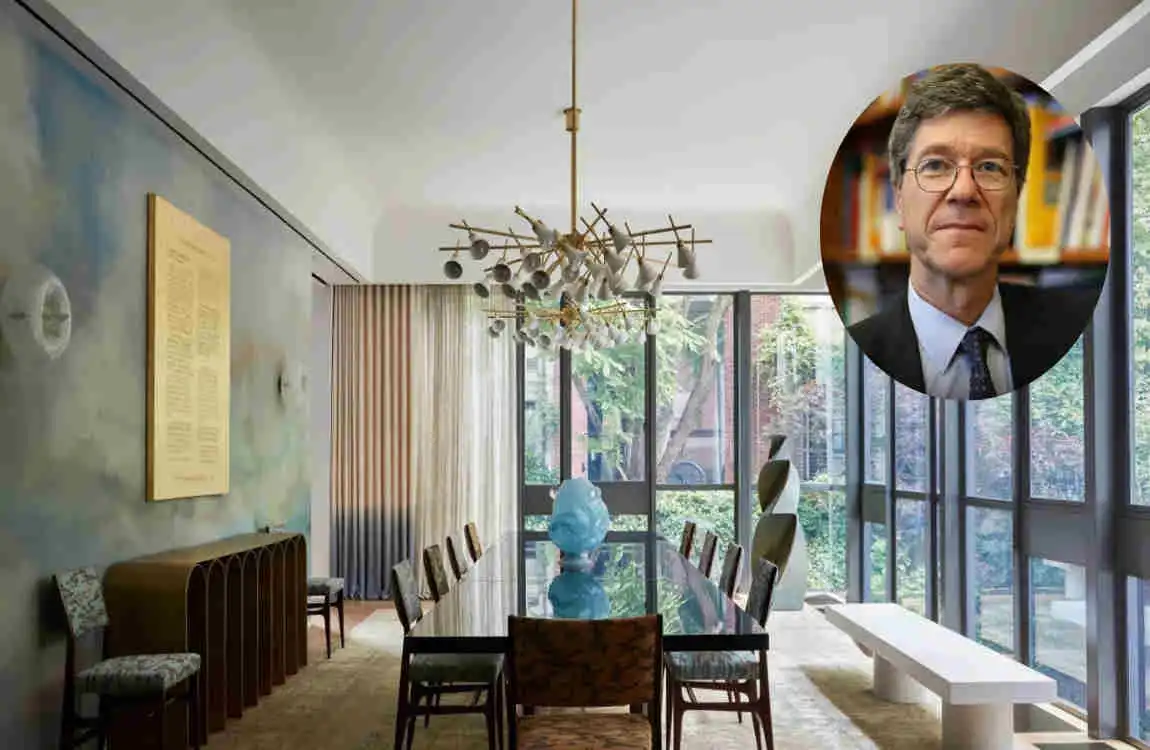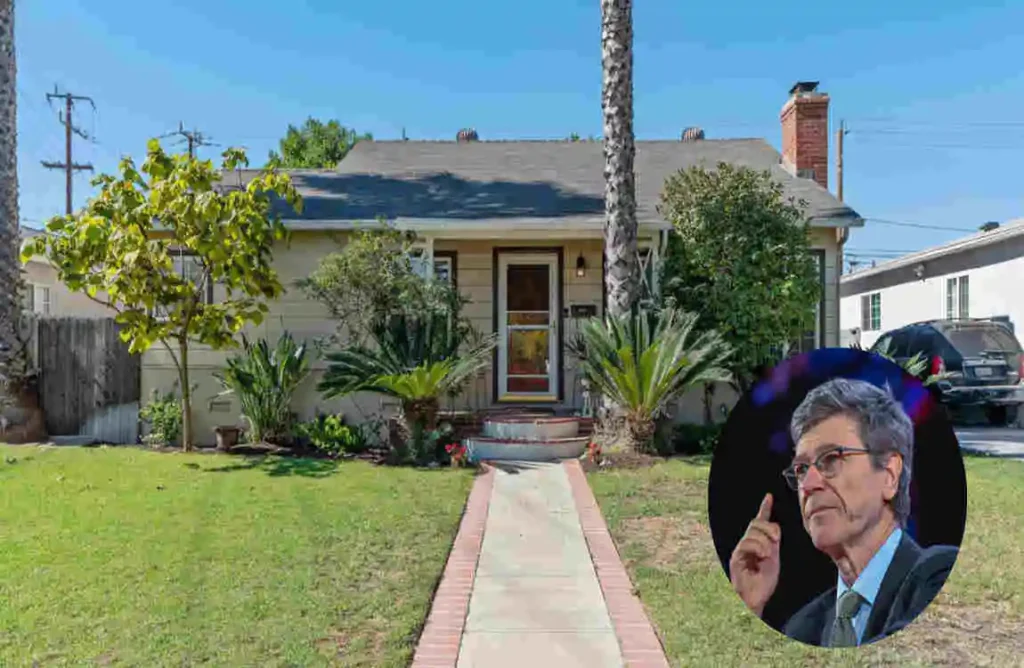When you think about influential economists and their personal spaces, you might not immediately consider how their homes reflect their professional values. Yet, the Jeffrey Sachs House stands as a remarkable testament to how personal philosophy can shape architectural choices. This fascinating residence doesn’t just provide shelter—it embodies a powerful statement about sustainable living and conscious design.
Jeffrey Sachs, renowned for his groundbreaking work in sustainable development and global economics, haas created more than just a home. He’s crafted a living laboratory that demonstrates how modern architecture can harmonize with environmental responsibility. The design choices visible throughout his residence speak volumes about his commitment to the principles he advocates professionally.
Architectural Style Overview of Jeffrey Sachs’ House

Design Philosophy and Aesthetic
The Jeffrey Sachs House embodies a contemporary architectural style that combines minimalist principles with environmental consciousness. Clean lines dominate the exterior, creating a sense of order and purpose that mirrors Sachs’ analytical approach to global challenges. The structure doesn’t shout for attention; instead, it whispers sophistication through understated elegance.
Natural materials play a prominent role throughout the design. Locally sourced stone creates a foundation that literally and figuratively grounds the home in its environment. Sustainable timber frames large windows that flood interior spaces with natural light, reducing the need for artificial illumination during daylight hours. These material choices aren’t merely aesthetic—they represent a commitment to reducing transportation emissions and supporting local economies.
Key Architectural Features
The exterior design of the Jeffrey Sachs house showcases several distinctive elements that set it apart from conventional residential architecture:
Horizontal emphasis creates a sense of connection with the surrounding landscape. Rather than reaching skyward, the home extends outward, embracing its environment. This design choice reduces wind resistance and minimizes the structure’s visual impact on the neighborhood.
Strategic window placement maximizes natural ventilation while maintaining privacy. Large glass panels are positioned to face optimal directions for passive solar heating in winter and natural cooling in summer. These aren’t random choices—they’re calculated decisions based on solar orientation and prevailing wind patterns.
The color palette draws inspiration from the natural surroundings. Earth tones dominate, with warm grays, soft browns, and muted greens creating visual harmony. These colors not only look good—they also help the structure blend seamlessly with its environment, reducing visual pollution and preserving the neighborhood’s character.
Contextual Comparison
When compared to typical homes in its geographical area, the Jeffrey Sachs house stands out for its restraint rather than ostentation. While neighboring properties might feature elaborate facades or imposing entrances, Sachs’ residence achieves impact through thoughtful simplicity. This approach challenges conventional notions of luxury, suggesting that true sophistication lies in conscious design rather than excessive ornamentation.
The architectural style also incorporates regional influences while pushing boundaries. Traditional elements are given modern interpretations, creating a dialogue between the past and the present. This respectful innovation demonstrates how sustainable architecture can honor local heritage while embracing contemporary solutions.
Sustainable and Eco-friendly Elements
Renewable Materials and Construction
The commitment to sustainability in the Jeffrey Sachs House begins with the very materials used in its construction. Reclaimed wood from demolished structures finds new life in flooring and accent walls, reducing demand for virgin timber while adding character through unique patinas and textures. Each plank tells a story, connecting the home to broader narratives of renewal and transformation.
Bamboo, one of the world’s most rapidly renewable resources, appears throughout the interior. This versatile material provides durability comparable to traditional hardwoods while regenerating completely within three to five years. The choice reflects a deep understanding of resource management and long-term environmental impact.
Recycled steel forms the structural skeleton, providing strength without the environmental cost of new production. Manufacturing recycled steel requires approximately 75% less energy than producing new steel, significantly reducing the home’s embodied carbon footprint. These beams and supports represent tons of carbon dioxide that never entered the atmosphere.
Energy Efficiency Systems
The Jeffrey Sachs House incorporates multiple layers of energy-saving technology that work together seamlessly. Triple-pane windows filled with argon gas provide exceptional insulation, maintaining comfortable interior temperatures regardless of external conditions. These high-performance windows reduce heating and cooling demands by up to 50% compared to standard double-pane alternatives.
A sophisticated geothermal heating and cooling system taps into the earth’s stable underground temperatures. Pipes buried deep beneath the property circulate fluid that absorbs or releases heat as needed. This system operates with remarkable efficiency, using approximately 25-50% less electricity than conventional HVAC systems.
Smart home automation optimizes energy use throughout the day. Sensors detect occupancy and adjust lighting, temperature, and ventilation accordingly. When rooms sit empty, systems automatically reduce consumption. This intelligent management prevents waste without requiring constant manual intervention.
Solar Integration and Renewable Energy
Photovoltaic panels cover strategic portions of the roof, positioned to maximize solar exposure throughout the year. These aren’t just token installations—the array generates enough electricity to meet most of the home’s energy needs. On particularly sunny days, excess power flows back to the grid, effectively running the meter backward.
Solar water heating supplements the electrical system, using the sun’s energy to warm water for domestic use. Collectors on the roof absorb solar radiation, transferring heat to water storage tanks. This system can provide up to 80% of hot water needs, dramatically reducing reliance on conventional water heating methods.
Battery storage systems capture excess solar energy for use during periods of cloudiness or nighttime hours. These advanced lithium-ion batteries ensure consistent power availability while maximizing the use of renewable energy. The system intelligently manages charging and discharging cycles to extend battery life and optimize performance.
Water Conservation Strategies
The Jeffrey Sachs House treats water as the precious resource it truly is. Rainwater harvesting systems collect precipitation from roof surfaces and store it in underground cisterns. This captured water irrigates landscaping and supplies toilets, reducing municipal water consumption by approximately 40%.
Low-flow fixtures throughout the home minimize water use without compromising functionality. Dual-flush toilets enable users to select the appropriate water volume for their specific needs. Aerating faucets mix air with water, maintaining pressure while reducing flow rates. These simple technologies collectively save thousands of gallons annually.
Greywater recycling systems give water a second life. Water from sinks and showers, after appropriate treatment, irrigates landscape plants. This closed-loop approach ensures that water serves multiple purposes before returning to the natural cycle.
Interior Design and Functionality

Open Spaces and Natural Light
Step inside the Jeffrey Sachs house, and you’ll immediately notice how open floor plans create a sense of spaciousness that extends beyond square footage. Walls appear only where absolutely necessary, allowing spaces to flow seamlessly into one another. This design philosophy encourages interaction and movement while maximizing the utility of every square foot.
Natural light floods these open spaces through strategically placed skylights and clerestory windows. The quality of this light changes throughout the day, creating dynamic environments that connect inhabitants to natural rhythms. Morning sun energizes eastern spaces, while western areas glow warmly in the evening.
The interior architecture eliminates unnecessary barriers between indoor and outdoor spaces, creating a seamless transition. Sliding glass walls open completely, erasing boundaries between interior rooms and exterior patios. This flexibility allows the home to expand and contract based on weather and entertainment needs.
Furniture and Material Choices
Furniture selection in the Jeffrey Sachs house prioritizes both sustainability and functionality. Locally crafted pieces from certified sustainable sources populate living spaces. These aren’t just furniture items—they’re functional art pieces that support local artisans while minimizing transportation emissions.
Natural fibers dominate textile choices. Organic cotton, wool, and linen offer comfort without the environmental burden associated with synthetic materials. These materials breathe naturally, contributing to indoor air quality while providing tactile pleasure.
Built-in storage solutions maximize space efficiency while maintaining clean lines. Custom cabinetry uses low-VOC finishes that protect indoor air quality. Every storage element serves multiple purposes, demonstrating that sustainable design doesn’t require sacrificing functionality.
Technology Integration
The Jeffrey Sachs House seamlessly incorporates technology without allowing it to dominate the living experience. Hidden charging stations keep devices powered without creating visual clutter. Integrated speakers provide audio throughout the home while remaining virtually invisible.
Climate control systems respond to both occupancy patterns and weather forecasts. The home learns from inhabitants’ behaviors, anticipating needs and adjusting accordingly. This predictive approach optimizes comfort while minimizing energy consumption.
High-speed internet infrastructure supports remote work and digital entertainment without visible cables or equipment. The technology enhances rather than defines the living experience, remaining accessible but unobtrusive.
The Architectural Team and Their Vision
Design Team Background
The architectural firm behind the Jeffrey Sachs House brings decades of experience in sustainable residential design. Their portfolio includes numerous LEED Platinum-certified projects and award-winning, eco-friendly homes. This expertise ensured that sustainability considerations influenced every design decision from conception to completion.
The lead architect’s philosophy aligns perfectly with Sachs’ vision. They believe that truly sustainable architecture must strike a balance between environmental responsibility, human comfort, and aesthetic appeal. This holistic approach resulted in a home that succeeds on multiple levels.
Collaboration between the architect and the client proved essential to the project’s success. Regular consultations ensured that design choices reflected both professional expertise and personal preferences. This partnership created a luxury home that authentically represents its owner while pushing the boundaries of architecture.
Design Process and Challenges
Creating the Jeffrey Sachs House required overcoming numerous challenges. Local building codes sometimes conflicted with innovative sustainable features. The team worked closely with municipal officials to demonstrate the safety and efficacy of their proposals, ultimately securing variances for several pioneering elements.
Material sourcing presented another challenge. Finding suppliers who could provide genuinely sustainable materials at reasonable costs required extensive research. The team developed relationships with local providers, sometimes waiting months for specific reclaimed materials that met project standards.
The architects describe the project as transformative for their practice. Working on the Jeffrey Sachs house pushed them to explore new technologies and techniques. These innovations now inform their approach to other projects, multiplying the impact of this single residence.
Comparison with Other Notable Sustainable Homes
Leading Examples in Sustainable Architecture
When examining the Jeffrey Sachs house alongside other renowned sustainable residences, several interesting comparisons emerge. The Bullitt Center in Seattle, often referred to as the world’s greenest commercial building, shares similar commitments to achieving net-zero energy consumption. However, while the Bullitt Center makes bold architectural statements, Sachs’ home achieves sustainability through subtle integration.
Consider the ZEB Pilot House in Norway, which generates more energy than it consumes over its lifetime. Both homes utilize advanced solar technology and superior insulation. Yet the Jeffrey Sachs House distinguishes itself through its emphasis on locally sourced materials and community integration. Where the Norwegian example showcases technical achievement, Sachs’ residence demonstrates holistic sustainability.
Unique Features and Innovations
The BioMilano residential complex in Italy shares Sachs’ commitment to urban sustainability but approaches it differently. While BioMilano emphasizes vertical gardens and communal spaces, the Jeffrey Sachs House focuses on individual responsibility and private innovation. This comparison highlights different philosophical approaches to sustainable living.
Where Does Jeffrey Sachs Currently Live?
Jeffrey Sachs currently lives in New York City with his wife Sonia Ehrlich Sachs. He is a professor at Columbia University in New York and directs the Center for Sustainable Development there.
